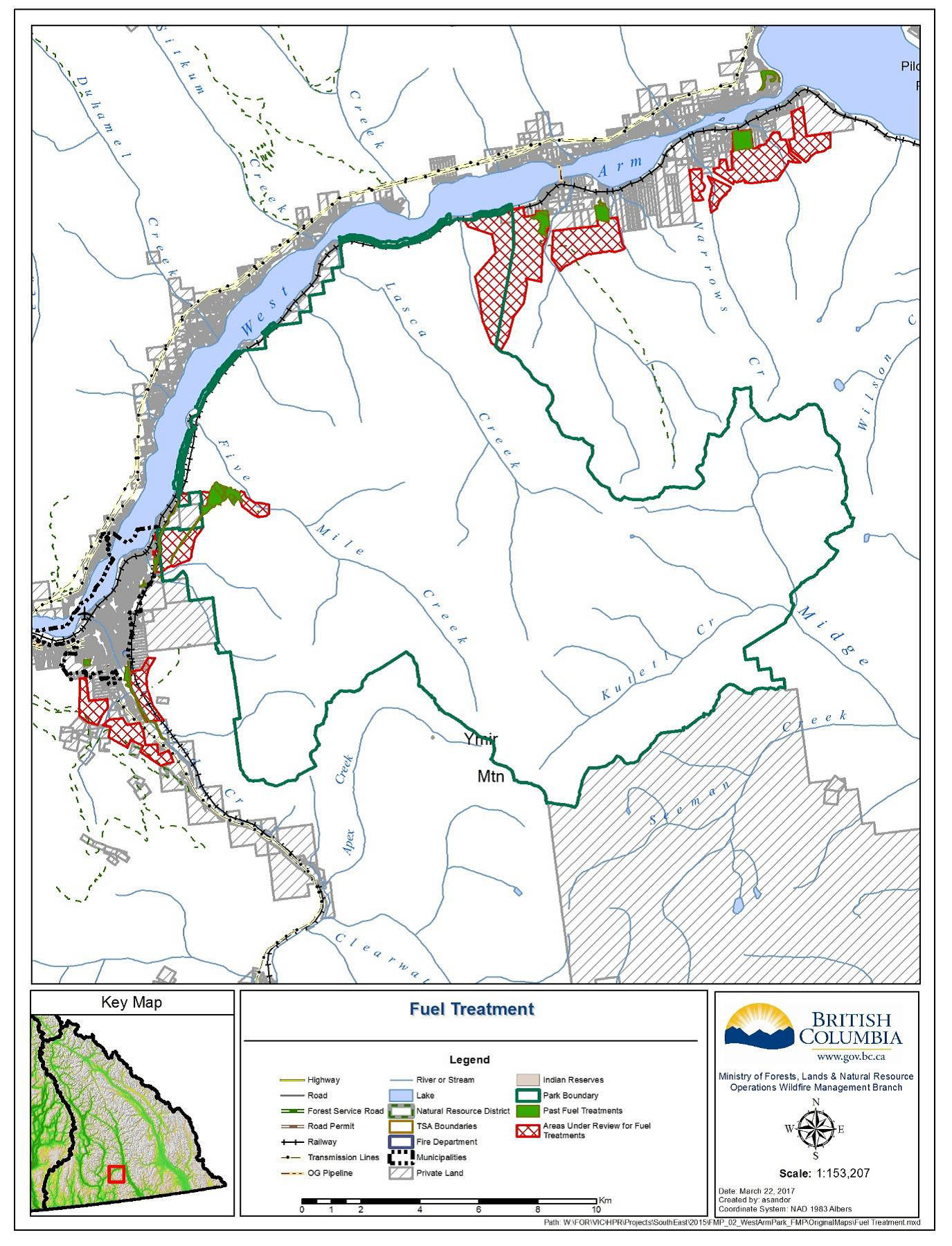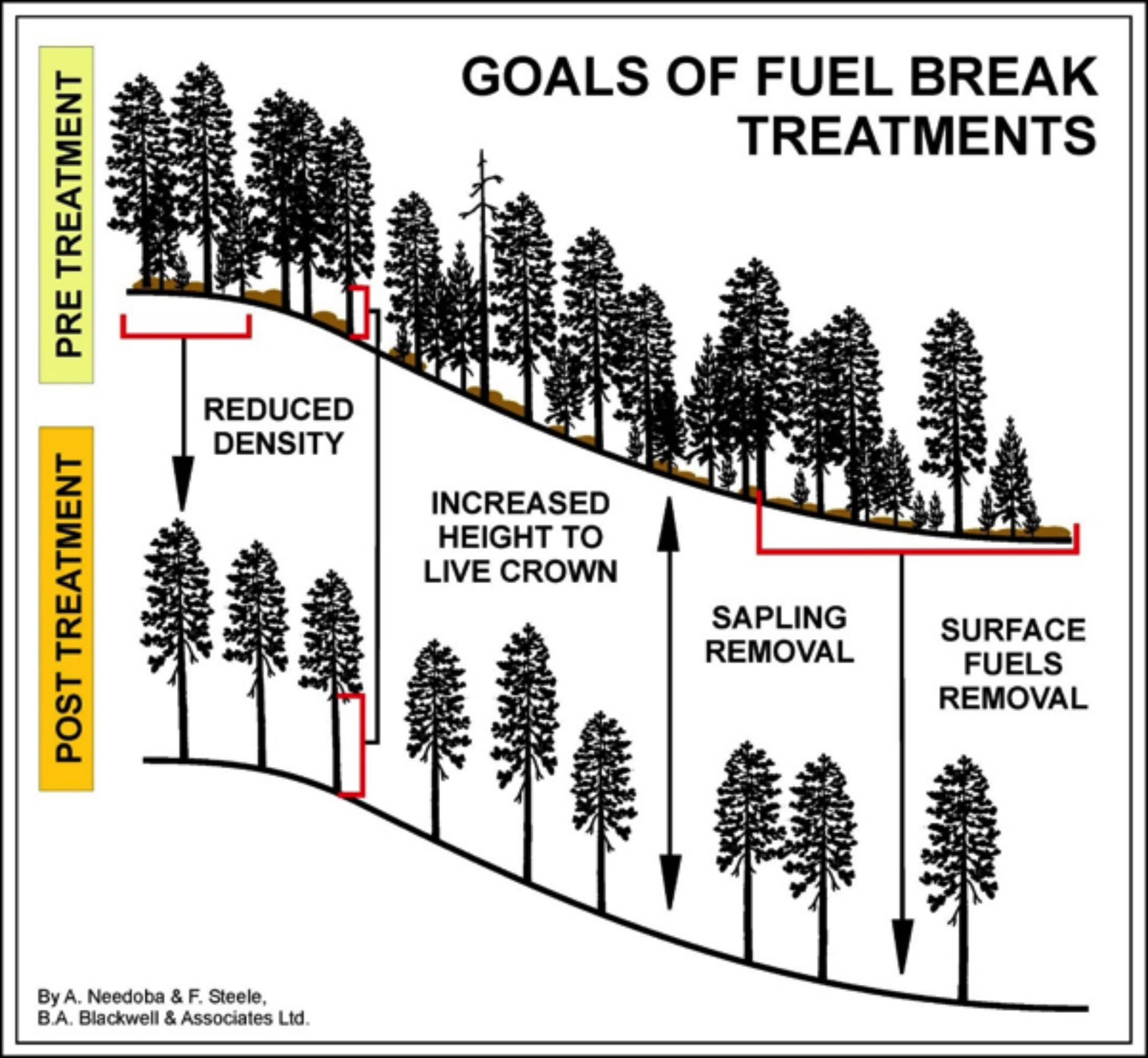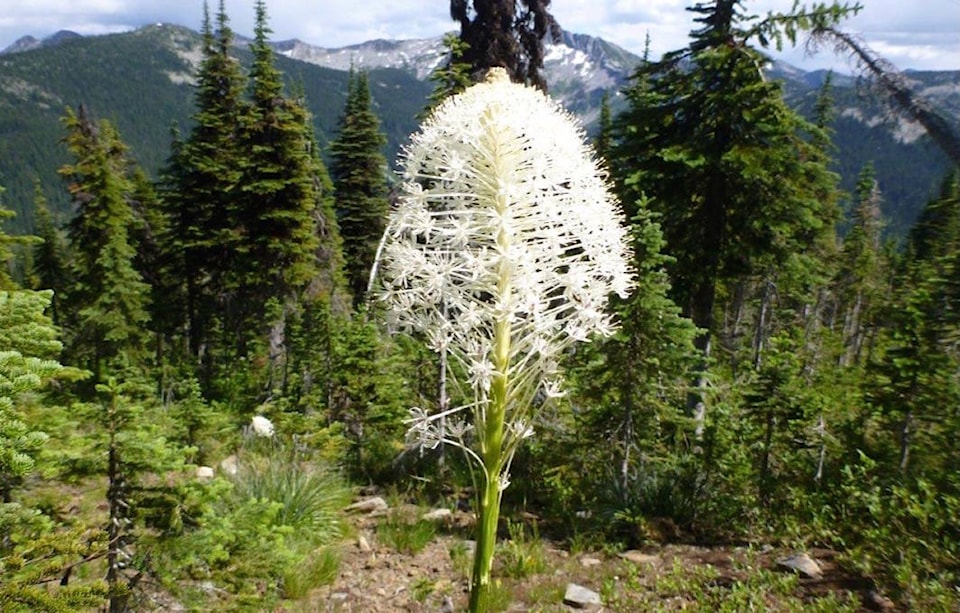By January, forestry consultants John Cathro and Erik Leslie will have decided, in detail, what will it take to reduce the risk of wildfire in five specific areas of West Arm Provincial Park.
B.C. Parks’ Amanda Weber-Roy, who will act once she has received Cathro and Leslie’s plans, said the prescriptions for wildfire fuel treatments will have measurable goals that will differ in different parts of the landscape.
“The prescriptions will show what the forest stand looks like now, and what we want it to look like after,” said Weber-Roy during a public meeting about the West Arm Park fire plan on Tuesday. The unadvertised meeting was sparsely attended.
“[The plan] will tell you, for example, that (in one specific area) you should remove the trees that are a certain species under 17.5 centimetres diameter at breast height. Or it might say after you have treated it you want the stand to be a certain density of stems per hectare.”
Fuel breaks are planned for five specific areas in the park (see map below):
• Adjacent to the community of Harrop-Procter (356 hectares)
• Adjacent to the City of Nelson (140 hectares)
• Adjacent to the Svoboda Road residences and a private Anderson Creek Timber lot (28 hectares)
• Along Five Mile Creek (43 hectares)
• The existing Five Mile Creek fuel break requires a maintenance prescription (69 hectares)
Generally speaking, creating fuel breaks means working by hand, modifying forest vegetation by retaining large dominant trees, thinning and removing small trees, removing deadfall, pruning the lower parts of the retained trees, and burning everything removed.
But in a park, it can be more complicated.
West Arm Provincial Park has rugged terrain and no access roads, beetle killed trees that probably would have otherwise been logged in regular Crown land, and ecological values consistent with wilderness conservation.
It also contains Nelson’s water source at Five Mile Creek, which is at serious risk in case of a wildfire. People in Nelson are worried that a fire might start in the park and threaten the city. But there is also a reverse concern: BC Parks is worried that a fire started in city could spread to the park.
And they need to make sure their fuel mitigation efforts don’t affect the water supply either.
Related: Reducing fire danger in West Arm Park
Related: RDCK plans wildfire fuel action
Related: Nelson area wildfire protection plan presented
“There is a lot of biodiversity in a riparian system like that,” said Cathro, “so it is going to be very hard on really steep terrain to protect riparian and biodiversity values too. So we are scratching our heads: how do we reduce the fuel in this area and not have negative impacts?”
Weber-Roy says it’s a lot different from logging.
“It is not like if you are going on to this forest land and harvesting for the sake of harvesting,” she says. “This is creating a shaded fuel break in a provincial park, so we want to make sure that all the things we are responsible for protecting are protected.”
Fuel mitigation work is expensive: up to $10,000 per hectare. But the totality of the areas listed above may not be treated. The size of the treated area will depend on ease of access and vegetation type. And Weber-Roy won’t know the size, or therefore the cost, until Leslie and Cathro have written the prescriptions.
At Tuesday’s meeting, Cathro speculated that some of the timber to be thinned could be marketable and that a lumber company might buy it, thereby offsetting the cost of the fuel treatment. But Weber-Roy said no such companies have been contacted about this. Again, she is waiting for the prescriptions.
There was also a discussion of the possibility of chipping the wood rather than burning it, but the problem, Cathro said, is getting a chipper into off-road locations, and, if those locations are close to town, the noise created by the chipper.
The project has already received a $56,000 grant from the Forest Stewardship Society and Weber-Roy will be applying for more money from the society and from other sources once the prescriptions are received.
“Erik (Leslie) is looking at the 356 hectare chunk next to Harrop, but he is saying there might only be these small 30 to 40 hectare chunks where we can actually do any work, because of accessibility. So I don’t know what the cost will be until I see what they are prescribing. But it is going to be expensive per hectare, they always are.”
She said after she receives the prescriptions, B.C. Parks also needs to do an impact assessment of them. Weber-Roy expects it will take until this time next year to see boots in the forest, creating fuel breaks.
At Tuesday’s meeting there were several residents of the Svoboda Road area asking for more discussion with B.C. Parks about the plans for their area, and Weber-Roy started those discussions immediately by sitting down with them after the meeting.
West Arm Provincial Park was formed in 1995 to protect 26,199 hectares of land located along Kootenay Lake between Nelson and Harrop and the mountains behind.
It was created to protect cultural and heritage values including First Nations archaeological sites situated along the lake shore, railway development and sternwheeler ships.
The park also protects wildlife habitats ranging from lakeshore to alpine including old growth forests, grizzly bear and mountain caribou habitat, and important watersheds including Five Mile Creek, which feeds Nelson’s water supply.
West Arm Park is undeveloped, with no facilities or designated campsites.


